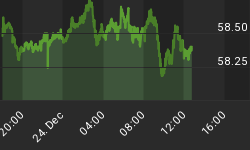Correlations come and go, but the path of Euros and gold rarely diverge vs. the Dollar...
"The DOLLAR is not a good store of value," says Nobel prize-winner Joseph Stiglitz, finally catching onto the last nine decades' 95% loss of purchasing power.
"Right now," he told an audience in Bangkok on Friday, "the Dollar is yielding almost no return and yet anybody looking at the Dollar has to say there's a high degree of risk."
Gold also yields nothing, but your risk in the metal is somewhat lower. At least it will still be a lump of rare, precious, yellow and shiny metal tomorrow.
Whereas the Dollar...or Euro?

The gold market has been typically quiet this summer. Whether or not the typical autumn surge will follow, who can say? But hedge funds have trimmed their futures position, and London dealing volumes have shrunk, along with volatility.
If the gold market were re-loading its gun, ahead of a fresh crisis of confidence in everything else, it would choose just those bullets. Correlations come and go for the gold price, meantime...now moving with oil, now moving in opposition to stocks. But the strongest link outside precious metals remains the correlation between the Euro currency and gold priced in Dollars. And given what's quietly happening to investment-cash flows into - or rather, out of - the Dollar, that might come to matter sooner than not.
Daily changes in silver show a monthly correlation co-efficient of 0.61 with Gold Prices across the last four decades. (That figure would stand at 1.0 if gold and silver always moved together and by precisely the same percentage.) The link between Dollar-gold and the Euro is nearly as strong, averaging 0.51 since the start of 2000 and turning negative - with Euros and gold moving in opposite directions - on fewer than 12% of this decade's trading days.
The link has been very strong, reaching above its current level of 0.90, almost one-sixth of the time. And all told, that leaves the current state of play as:
- Crude oil correlation: 0.67 (decade average 0.21)
- S&P correlation: 0.28 (decade average 0.08)
- Euro: 0.92 (decade average 0.51)
Typically, the correlation with Euros can be expected to ease back from the current extreme, but it's unlikely to go sharply negative should the Euro now rise. So says this decade's bull market in Euros and gold to date. Which would suggest, in turn, that whatever comes next for the Euro/Dollar exchange rate, a similar path lies ahead for the metal - unless the Euro drops sharply while gold holds strong vs. the Dollar, a mild case of which we got in 2005, followed a severe dose at the very start of this year.
"Is there any evidence that the Dollar has been undermined by the credit crunch?" wonders Steven Barrow at Standard Bank, pretty much to himself. (It really has been a quiet summer here in London.) "We think there might be and it is to be found in data on bond and stock purchases by investors..."

Barrow notes that for the Eurozone - the world's largest single economy, provided you ignore the chasm between Germany and pretty much each of the 15 other sovereign members, focusing on their shared currency alone - foreign purchases of bonds, stocks and money-market instruments has jumped in the last year.
US Treasury data, on the other hand, shows a sharp decline in foreign purchases of stocks and bonds.
"Whether this reflects weakening confidence in the Dollar is anybody's guess," Barrow concludes. "[But] investors have shown a marked preference for Eurozone securities over US securities. The fact that we have not seen the same surge in net buying of Japanese securities might suggest the growing elevation of the Euro's international role - at the expense of the Dollar."
To repeat: A rise in the Euro vs. the Dollar, on this decade's record at least, would imply rising Dollar-gold prices as well. But that by itself would hide the deep trend beneath - the fact gold has outpaced the Euro on top. The single currency has risen 40% against the Greenback since it was launched a decade ago. Dollar-averse investors should note that gold's then risen 150% against the Euro as well.
















